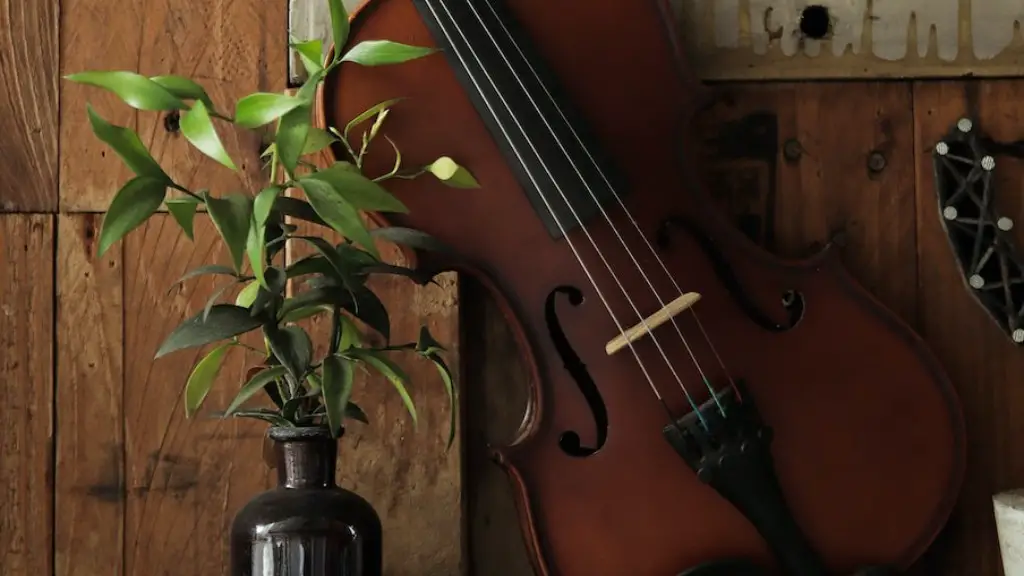Cleaning a trumpet is an important part of maintenance for any musician. A trumpet’s valves and slides can quickly become clogged with dirt, saliva, and other debris from repeated playing. It is essential to clean the trumpet regularly in order to keep it in optimal playing condition.
The best way to clean a trumpet is using warm water and soap. Start by removing the mouthpiece and slide from the instrument, then rinse them with warm water. Then fill a container with warm water and add a small amount of liquid dish soap. Soak all of the parts for about 10 minutes before rinsing them off. Make sure all soap residue has been washed off before drying the parts completely.
Once the parts are dry, use a soft cloth to wipe down the outside of the trumpet, paying special attention to the valves and slides. Finally, reassemble your instrument and apply valve oil if necessary.
Regular cleaning of your trumpet will help keep it in top condition for years to come and allow you to enjoy playing your instrument without worry. With a few simple steps, you can easily maintain your trumpet’s shine!
Gather Supplies Needed for Cleaning
Taking proper care of a trumpet is important to ensure its longevity. To clean a trumpet with water, you will need to gather the following supplies: a bowl of warm water, mild dish soap, a cleaning cloth, a mouthpiece brush, and valve oil.
Before you begin cleaning your trumpet, make sure you have all the supplies ready so that it can be done quickly and easily. Fill the bowl with warm water and add a few drops of mild dish soap. Dip the cleaning cloth into the soapy mixture and wring out any excess liquid. Use the damp cloth to wipe down the exterior of your trumpet and remove any dirt or grime that has built up over time.
To clean the interior of your trumpet you will need to use a mouthpiece brush. Dip this into the soapy water then use it to scrub away any debris inside your instrument. Be sure to dry all parts completely before applying valve oil and reassembling your trumpet. Doing this regularly will ensure it continues performing at its best! Don’t forget to store it in its case when not in use.
How to Disassemble the Trumpet
Cleaning a trumpet is necessary for keeping it in optimal condition. The first step is to disassemble the trumpet. Carefully remove the mouthpiece and slide it out of the main tube of the instrument. Then, unscrew the valves from the valve casing and set them aside, being sure to note their order in case they become disordered. Finally, take off the bell and separate it from the main tube of the instrument. Once all of these steps are completed, you are ready to clean your trumpet.
To clean your trumpet, you will need a soft cloth, warm water, and dish soap. Start by wiping down all surfaces with a damp cloth and then rinse it with warm water. To remove more stubborn dirt or grime, use a few drops of dish soap on a damp cloth and scrub gently around all areas of the instrument. Be sure to rinse well with warm water when done scrubbing, making sure all soap residue is removed from your trumpet.
Washing the Valve Casing and Pistons
Cleaning a trumpet is an essential part of maintaining it in top condition. To properly clean the valve casing and pistons, start by removing any excess dirt or debris with a soft brush. Next, fill a bowl or sink with warm water and a few drops of mild detergent. Place the valve casing and pistons in the water and allow them to soak for 10 minutes. Then, using a soft cloth, gently scrub away any remaining dirt or grime from the valves. Rinse all parts thoroughly before reassembling the trumpet. It is important to dry all parts completely before reassembling.
Once you have reassembled the trumpet, it is important to perform regular maintenance to ensure optimal performance. This includes cleaning any residue build-up from inside the tubing, lubricating all moving parts, and replacing old valves as needed. Following these steps will help keep your trumpet sounding great for years to come!
Cleaning a Trumpet
Cleaning a trumpet is an important part of maintaining your instrument. Regular maintenance will help to prevent dirt and build up from corroding the metal and damaging the sound quality. You can easily clean your trumpet with water, a soft cloth, and some polishing compound. Start by removing the slides and mouthpiece from the trumpet. Then, rinse them off with warm water to remove any dirt or grime. Use a soft cloth dampened with warm water to wipe down the inside of the trumpet and all of its components. Next, use a polishing compound on the slides and mouthpiece to give them a shine. Finally, reassemble the trumpet and it’s ready for use.
Be sure to regularly clean your trumpet. If left uncleaned for too long, dirt build-up can cause damage to the sound quality of your instrument, as well as corrode metal components over time. Cleaning your trumpet regularly will help you get the most out of it and maximize its life span.
Cleaning the Bell and Slide Tubes of a Trumpet
Keeping a trumpet clean is essential for maintaining its sound quality. The bell and slide tubes are especially prone to gathering dirt and grime due to regular use. To clean these parts of a trumpet with water, start by mixing warm water with mild detergent in a bowl. Make sure the detergent is not too strong or it could damage the trumpet. Next, use a soft cloth to gently scrub away any stuck-on dirt from the bell and slide tubes. Be sure to rinse both parts thoroughly after scrubbing. If there is still dirt that won’t come off, you can use an old toothbrush to lightly scrub the areas with more force. Finally, dry both parts of the trumpet with a soft cloth and store it in a cool, dry place.
To prevent buildup of gunk on your trumpet, it’s important to regularly wipe down the bell and slide tubes after playing. This will help keep your instrument looking and sounding great for years to come!
Reassembling the Trumpet After Cleaning
Once you have cleaned your trumpet, it’s time to put it back together again. Start by reattaching the three main parts of the instrument: the mouthpiece, the tuning slide, and the valve section. Make sure that all sections are tightened securely and that no parts are loose. Be sure to check for any water or debris still left in the instrument before reassembling.
Next, attach all valves and slides back into their respective slots. Be careful not to force them in as this could cause damage. Then, make sure each valve moves freely and has no resistance when pushed in and out. If there is any resistance, you may need to lubricate them with valve oil.
Once all of the valves have been attached and tested, it’s time to reattach the bell section of your trumpet. Carefully screw each section together until they are securely locked in place. Then, make sure all screws are tightened properly so that no pieces come apart when playing. Finally, double-check that all sections are connected firmly before playing your trumpet again!
Final Words
Cleaning a trumpet with water is an important part of regular instrument maintenance. By following the steps described above, you can easily clean your trumpet and keep it in top condition. Be sure to use warm, not hot, water to avoid damaging the instrument’s finish or any of its components. Additionally, if you encounter any difficult residue on the instrument, use a mild detergent solution or rubbing alcohol to help remove it. The key is to be gentle with your cleaning materials so as not to damage the instrument. Taking good care of your trumpet will help ensure its longevity and its performance quality.





